If you’re one of the 175 million people around the world who use Pinterest every month, you probably already know that there’s a lot to love. Maybe you think of Pinterest as a great place to collect clever home decor ideas or as the best spot to peruse beautiful images of tasty food (who doesn’t?) – but did you know that Pinterest is so much more than that? It may be the free genealogy tool you’ve been missing.
Though it’s often characterized as a social media site, it’s been better described as a “catalog of ideas” (by its CEO) or, even more astutely, as a visual search engine. The hybrid nature of Pinterest is what really makes it a one-of-a-kind experience. Part search engine, part organization tool, and part social media site – there are many useful features to be taken advantage of. As a family historian, you can harness this awesomeness for your own purposes.
First, let’s talk about how to get started with Pinterest (if you haven’t already) by creating an account.
Head over to Pinterest, then enter your email and a password – or log in with your Google or Facebook account:
Note: Once you’ve created your account, you can use Pinterest in your web browser or download the mobile app, available for Apple and Android, to use it on your phone or tablet.
When you log in for the first time, you’ll answer a few quick questions, choose from a general list of interesting topics you would like to follow, and then be given the option of installing a Pinterest “save button” in your browser. This may seem like something to just skip and think about later – but don’t!
Having the save button makes it super easy for you to gather ideas from anywhere on the web and organize them on your personal boards. And while many sites will allow you to pin images via their own save button (which appears as your mouse hovers over an image), many more do not. So, if you want to take full advantage of the power of Pinterest as you roam across the vastness of the internet – it’s a good idea to get the browser extension right out of the gate.
Okay, so now that you’re all set up with an account, you’re probably wondering – what next? How is using Pinterest going to improve my family history research?
The answer is a multi-faceted one – so let’s break it down by looking at the three major sides of Pinterest, and how each of these elements can benefit you as a family history researcher:
#1 – Pinterest as a Visual Search Engine for Genealogy
We all know the massive power of the search engine when it comes to finding answers to a wide array of questions, and genealogy research is certainly no exception. But Pinterest puts its own spin on the search engine by making it a primarily visual experience.
While not entirely unique, Pinterest’s search engine differs from similar search engines – like Google image search – in that it offers up results tailored to answer questions simply and directly.
The comparison below demonstrates this difference: using the search terms “free genealogy sites.” We searched both Google images and Pinterest. While the Google search turned up some very helpful images, the ability to quickly scan for the most relevant results is limited.
The Pinterest search, however, returned results that are designed to be useful at a glance. Pins are intended to make it clear to the viewer what they can expect from clicking on an image Whether it’s an article telling you how to find millions of immigration records or a list of 101 free genealogy websites, the genius of Pinterest makes these topics easily accessible.
The usefulness of this clever visual search goes beyond tracking down helpful articles or lists of free genealogy sites -from volumes of historical photos to clever genealogy crafting ideas and oodles of research helpers – there is a ton to be found here for the family historian. You might even find images about your own ancestors or the town that they lived in.
Note: You can search for other people’s boards in order to find collections of relevant information all in one place. Type in the name of the topic you are interested in – for example, American Civil War – and choose “Boards” from the dropdown menu at the end of the search bar.
Perhaps one of the best-loved, and most useful, resources on Pinterest for those of us tracking our ancestry is the printable. The visual nature of the Pinterest search is perfect for hunting down a wide variety of fun and free printables to aid your genealogy research. A quick search for “genealogy printables” will yield loads of helpful family history tools, such as:
- Forms
- Charts
- Family Trees
- Templates
- Checklists
- Questionnaires
- Posters
- Family Book Pages
- Worksheets
- Scrapbook Pages
- Vintage Maps
Now that you’ve begun to discover the treasure trove of genealogy help that is the Pinterest search, it’s time to create some boards for saving all of these awesome resources for future reference.
Start by choosing a pin that you would like to save for later. Once you’ve clicked on it for a larger view, select the red “save” button in the upper right-hand corner. Next, click the red plus sign to create a new board, choose a great name for it (be as broad as “genealogy” or specific as “family tree crafts”) and hit “create”!
Note: Don’t forget to add a description to your board (by opening your board’s settings and filling out the description field) so that viewers know what it’s all about and to help others locate it in the search!
Once you’ve created a board or two, you’re well on your way to taking full advantage of Pinterest for your family history research! Now let’s move on to the next element of this site that’s bound to come in handy for family history.
#2 – Pinterest as an Organization Tool
Wondering how Pinterest can help you become a more organized family history researcher? Well, there are a couple of answers to this question.
First, think of Pinterest as the ultimate bookmarking tool. If you use the bookmarking feature that’s built into your internet browser, you’re probably aware of how tough it can be to zero in on that exact how-to article or research site – the one that you know you saved sometime last year hiding in a mile-long list of other bookmarks.
Now imagine a list of bookmarks (aka your Pinterest board) that look like the one below: full of easy-to-identify links to your favorite genealogy sites and resources. Everything you saved for later is clearly displayed, ready for you to jump right in. 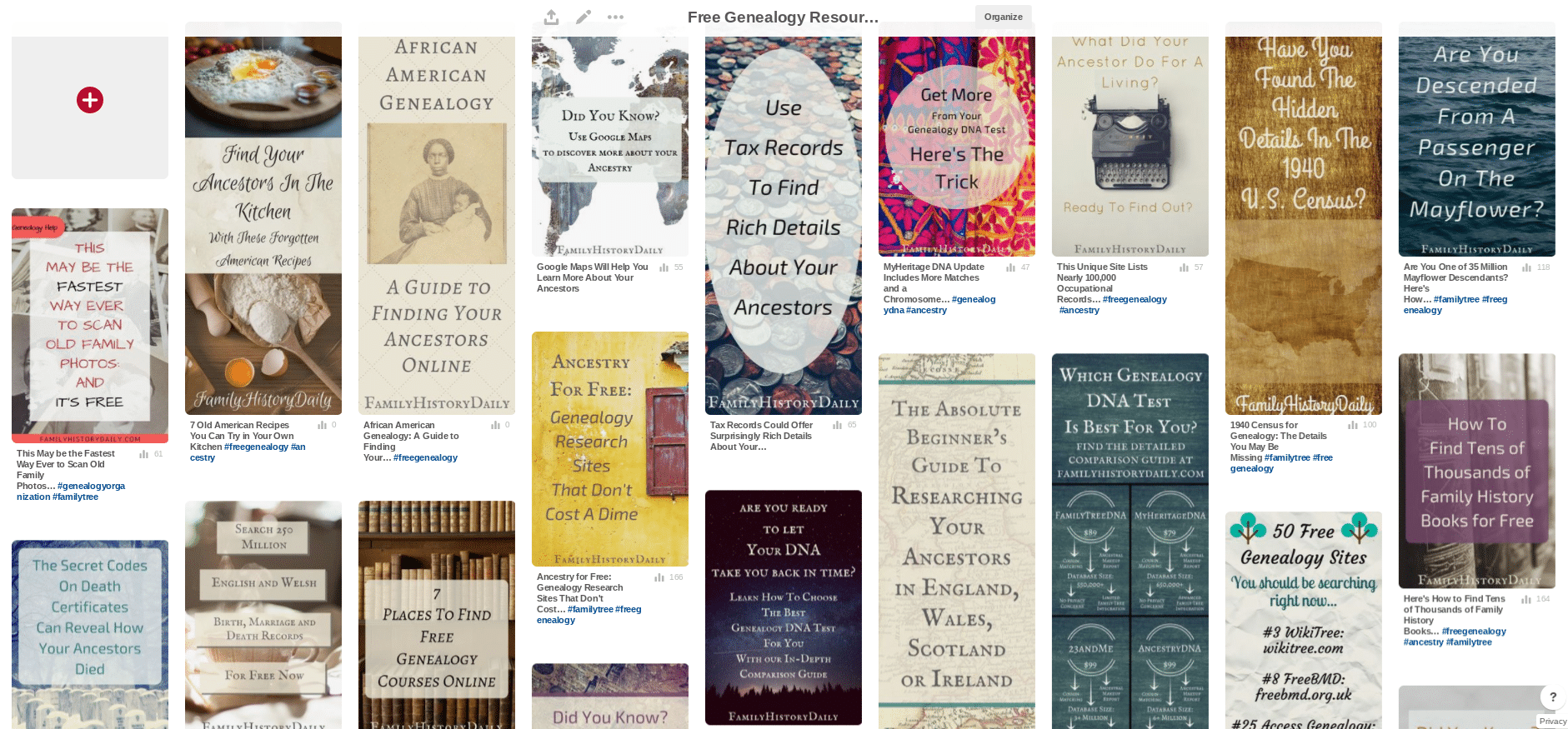
Note: Like what you see above? That’s Family History Daily’s Pinterest board dedicated to Free Genealogy Resources – and there’s more where that came from: we’ve got boards for Genealogy Organization, DNA for Ancestry, and a lot more. Check us out on Pinterest here.
In order to take Pinterest’s organizing power to the next level, start creating boards based around different elements of your research. Here are a few ideas to try out:
- Create a board for a specific surname you are researching and let it be a place for all things related to this branch of your family. From photos of family members to details about where they may have lived, the kinds of work they did, or even how they dressed and what they ate – it all adds up to a richer, more detailed picture of your ancestor(s).
- Make a board devoted to a specific place or time period that’s relevant to your family’s history. For example, if your great-grandfather met your great-grandmother in San Francisco in the 1920’s, create a board showcasing the history of San Francisco or highlighting features of the 1920’s in America.
- Create boards based around certain resource/record types like vital records, newspapers, census or tax records, immigration records, church records or genealogy books.
- Make a board devoted to free family history tools, resources, and records or one just for genealogy tips and how-tos.
- Create a board to collect recipes for traditional foods that your ancestors may have eaten – everything from basic evening meals to fancy foods reserved for special occasions.
- Make a memorial board: use it as a place to honor an ancestor or family member by showcasing what you know about that individual’s life – the people, places or things that they loved and the things that made them who they were.
- Create a board featuring all the places you would like to travel for your family history research, or for all the places you have been!
You might be wondering: where am I going to find all these great pins? There are a few different ways you can begin to build Pinterest boards – ones that expand, display, and organize your research – let’s look at the options:
1. Repin: The quickest and easiest way to add great pins to your boards – whether it be old photos, links to record collections, or educational materials (like family history help and how-to articles or handy genealogy infographics) – is to take advantage of the volumes of information already on Pinterest by using the search function. Adding other people’s pins to your boards is called “repinning.”
2. Pin from the Web: Another great way to find relevant material for your boards is to pin directly from the web. If the site you are wanting to save from has their own save button installed, you can pin content by simply hovering over any image, clicking the save button when it appears, choosing from the images available (sometimes you’ll have a few options), and then selecting which board you’d like your pin to go to. You can also do this by locating a Pinterest share button at the bottom of an article or page.
However, sometimes the site you’re wanting to save information from doesn’t facilitate pinning itself – this is where you’ll want to use your own “save button” installed in your browser. This process is essentially the same as the other method: hover over an image, click the save button, choose your board, and pin it.
3. Create Your Own Pins: Perhaps the coolest way to add pins to your boards is to create them yourself. It may sound a bit complicated but it’s really quite easy – not to mention that it’s a critical step towards creating boards that truly reflect your family’s story. Start by clicking the plus sign on the bottom right-hand side of the screen, this will open a window like the one shown below.
Now, upload your image (this could be a family photo, scanned record, screenshot etc) then – and this step is optional – add a URL that you want your image to link back to (your family site or online tree, for example).
Don’t forget to add a description – not only does this tell others what your pin is about, it could also help other family historians on Pinterest who are looking for information on a specific person, place, or thing. Include names, dates and locations as well as the source of the image you used whenever possible. Then, simply choose a board for your pin and you’ve done it!
Note: When it comes to organizing your research using Pinterest boards, don’t forget to take advantage of the “add section” feature at the top of each board. This allows you to further organize your boards by adding different sections to each of them.
Want to learn more about how to organize your research? Read about using Trello, Google Keep or Evernote for genealogy.
Now that you’ve got some beautiful genealogy boards underway, are you ready to find out another great way that Pinterest can improve your genealogy research?
#3 – Pinterest as a Way to Share Your Genealogy Research
While we know that Pinterest is so much more than a social site, this element remains an important part of what makes it such an amazing tool for family history research. Unlike many other research and organizing tools, Pinterest allows your work to easily be shared with family, friends, and other family historians.
While Pinterest users do have the option of creating boards that are private (choose “secret” in the board’s settings, then give access to specific people by inviting them to view your board), most boards are able to be viewed by anyone on Pinterest. This means that anyone interested in your research can simply visit your profile page, view your boards and repin helpful information to their own boards.
Wondering what else you can do with the social side of Pinterest? Here are some of your options:
- Invite family to collaborate on a specific board with you by entering their username or email in the collaborator area of your board’s setting and clicking invite.
- Follow friends, family, or your favorite family history sites (like Family History Daily, the US National Archives or FamilySearch) by going to their profile page and clicking “follow” in the upper right-hand corner.
- Follow individual boards devoted to topics you’re interested in by visiting the board and clicking “follow” in the upper right-hand corner.
- Have a question for another user? Message them by going to your notifications, choosing “inbox,” and entering the person’s username.
- Share a pin, board or profile with your friends by clicking the arrow in the upper left-hand corner of any pin or at the top of any board or profile. This will give you the option to share it via facebook, twitter, or as a message directly to your contacts.
Well, there you have it! From tracking down useful information to organizing your research to sharing it all with your family and friends, Pinterest just might be the genealogy research tool you’ve been missing! So get out there and start pinning!
By Kate Jackson, Family History Daily Associate Editor and Enthusiastic Pinterest Manager

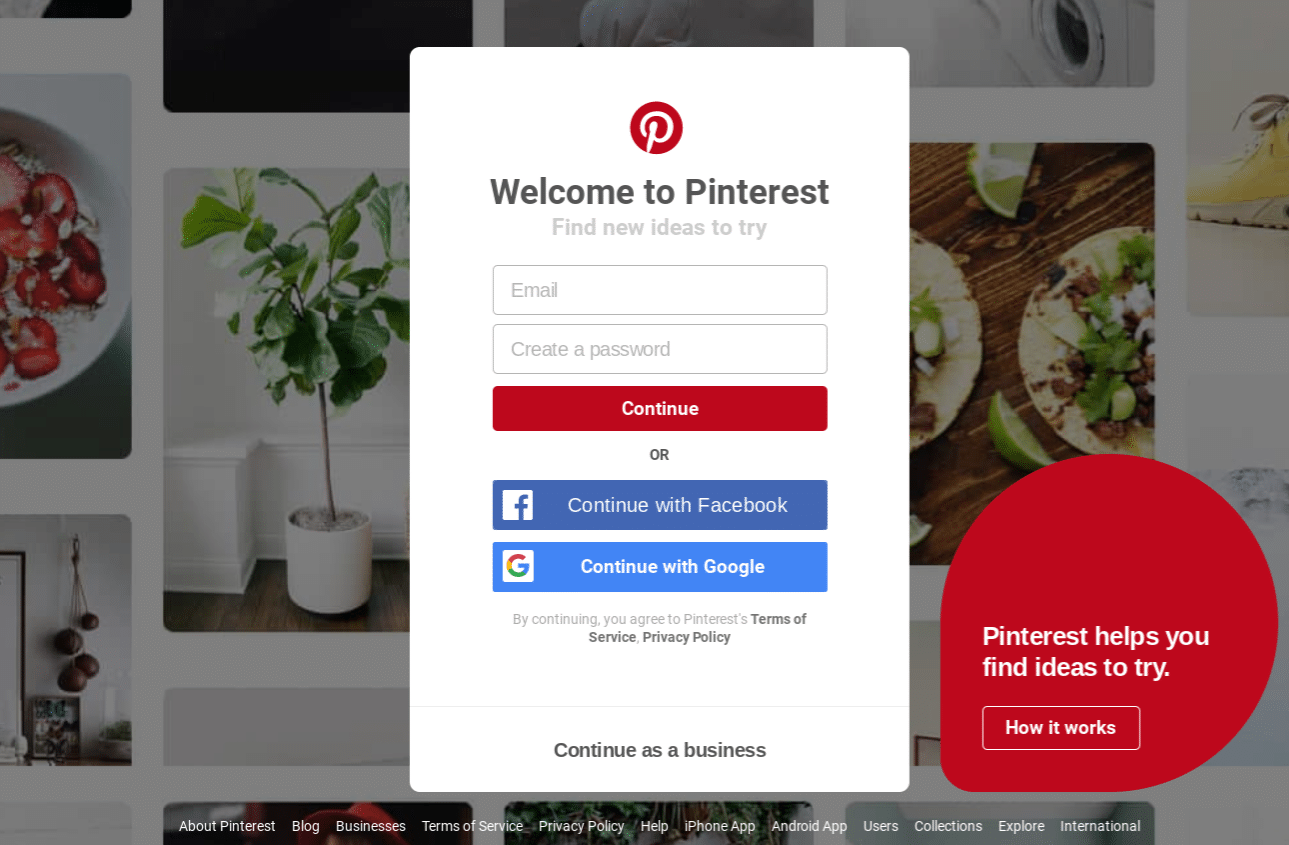

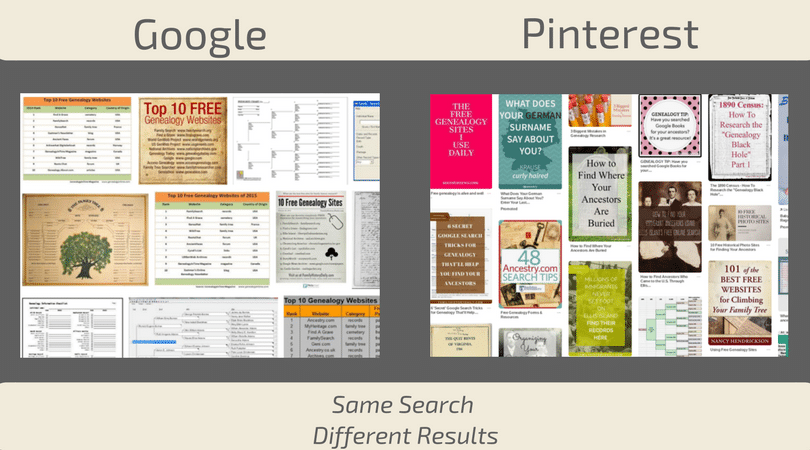
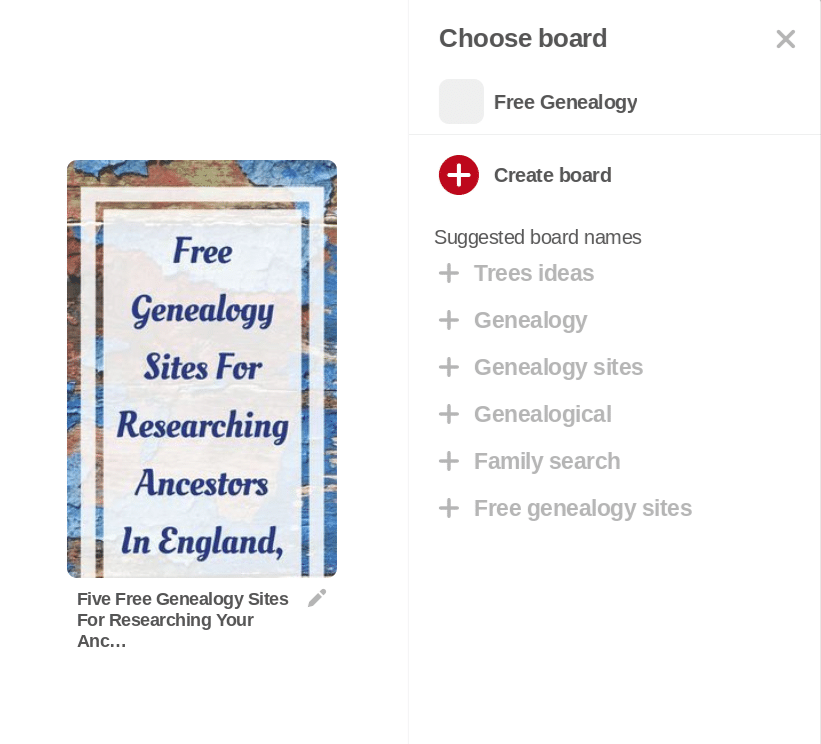
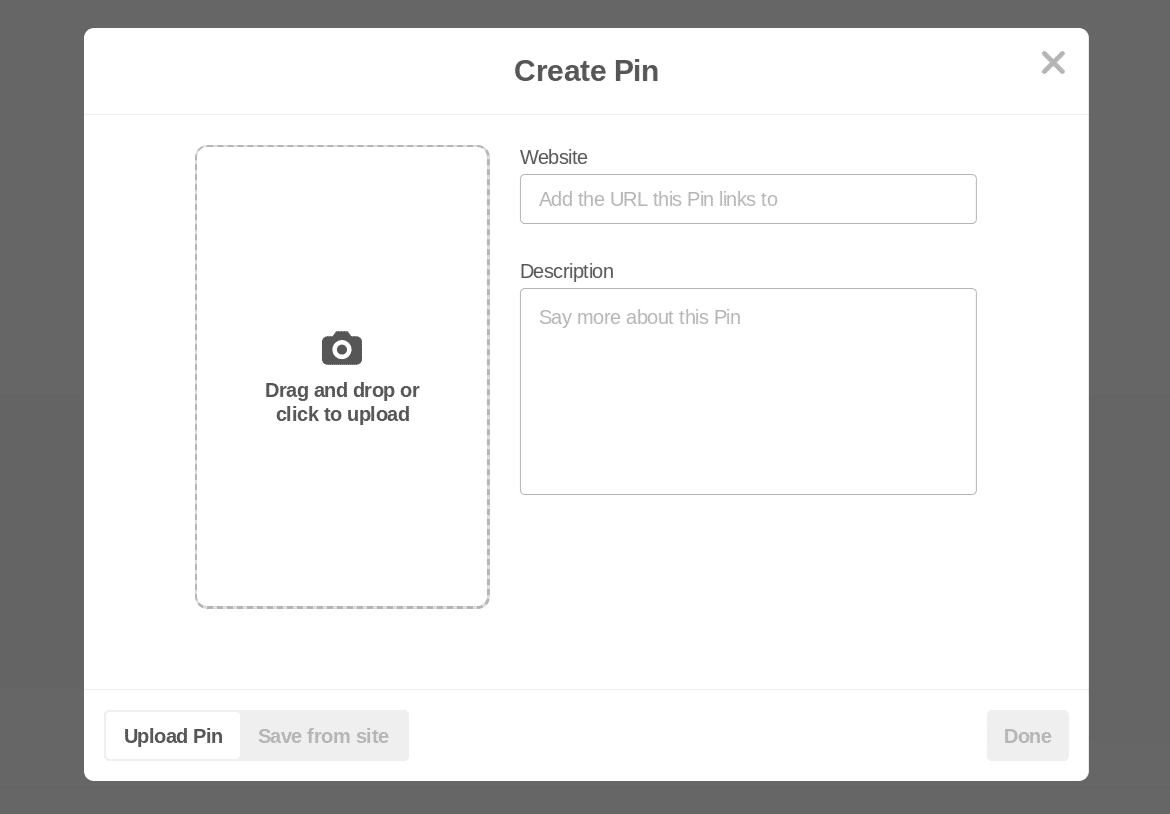
Hello Peggy,
If you’re not already familiar with the website WikiTree, please review and consider for your use. Based on what you described, WikiTree may meet your needs. The website address is: http://www.wikitree.com Best wishes!
After years of searching for an online site where I can post family photos and documents to share with other family members, Pinterest looks like a good solution. But… in trying to get started, I am unable to find the photos and docs when I try to upload them from my files. They are not available as choices to me. Is there something I’m missing or doing wrong?
If not Pinterest, what are other options? I want longevity, free or minimal annual cost, the ability to close (and open) the site and access to public searching, to be able to use consistent naming conventions and add additional information to a photo, and perhaps link to another site. I don’t want my photos and documents to become intellectual property of the online site/parent company, or have uncontrolled ability for others to download my photos and documents. I’ve looked at Google photos, Wix website, Shutterfly, Ancestry, Flicker, Instagram, Facebook…and found all lack a needed characteristic or ability.
Thank you!
Love to find family and create my Family Tree
I’d like to know this also. Any answers?
All I know is that I had no clue Pinterest did all this and now that I do…Game On! Thank you for the shared information!
I have noticed that many of the sites have printable documents and download buttons for those docs. Or just copy and paste, then print.
But how do you print say a work sheet off a thing that you saved